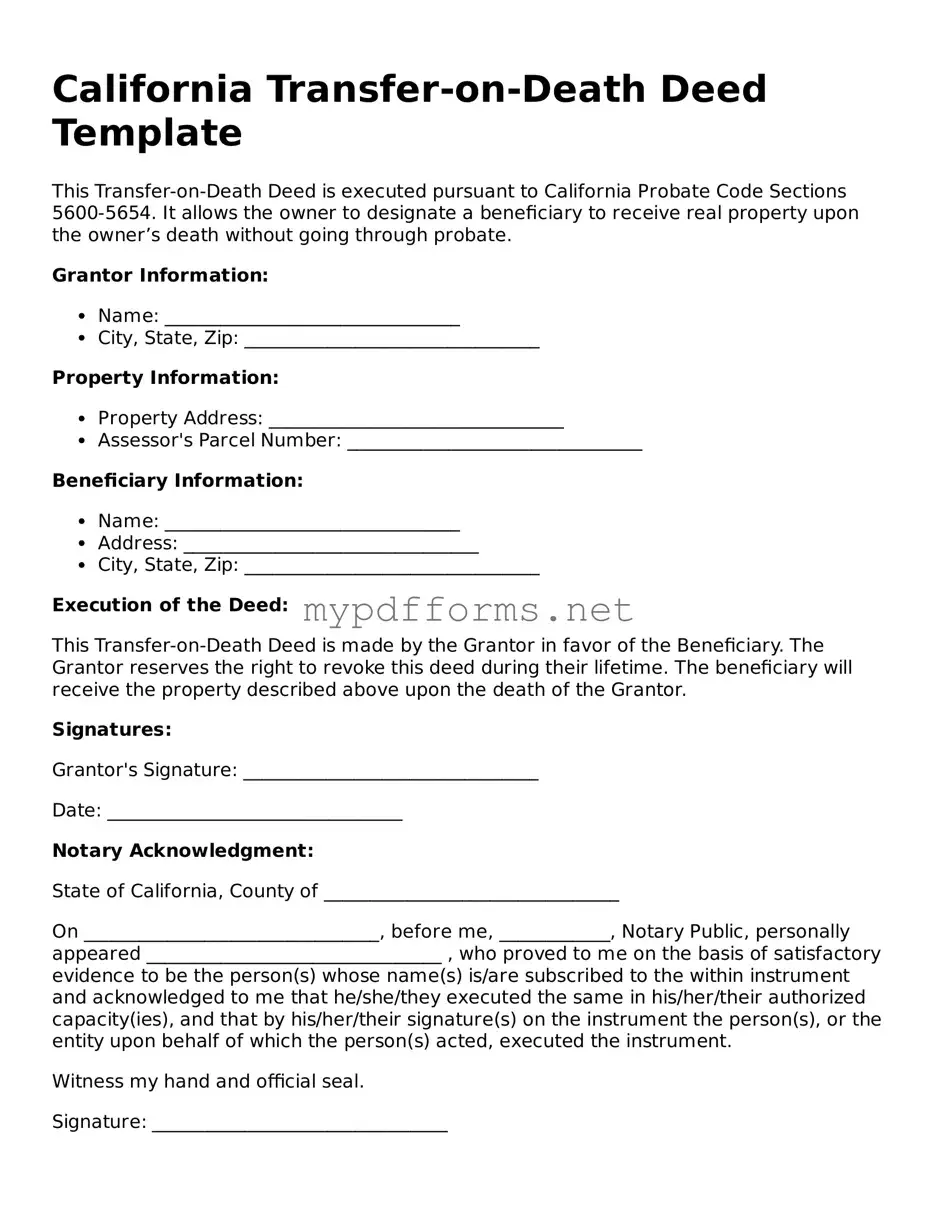Attorney-Verified Transfer-on-Death Deed Document for California
The California Transfer-on-Death Deed form allows property owners to transfer their real estate to designated beneficiaries upon their death, bypassing the probate process. This form provides a straightforward way to ensure that your property goes directly to your chosen heirs without the complexities often associated with estate administration. To begin the process of securing your property's future, consider filling out the form by clicking the button below.
Modify Document Here
